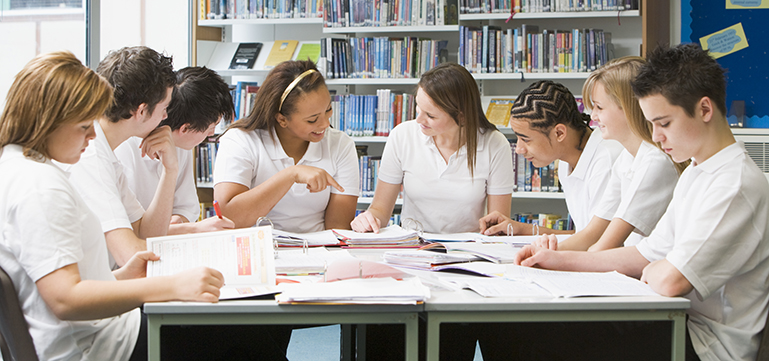Developing a flexible curriculum

Quick links:
Information about the school
Cwmtawe Community School is an 11-16 school in Neath Port Talbot, serving the lower Swansea Valley. Most pupils come from Pontardawe and the surrounding area, with about 50% opting to attend the school from outside the normal catchment area. There are 1,232 pupils on roll. The school has two specialist teaching units on site, one for dyslexic learners and the other specialising in autism spectrum disorder.
Seventeen point four per cent (17.4%) of pupils are eligible for free school meals. The school has 40% of pupils on the special educational needs register, and around 4% of pupils have a statement of special educational needs.
About 5% of pupils come from minority ethnic groups and a very few pupils come from homes where English is not the first language. Around 14% of pupils are fluent in Welsh.
The leadership team consists of the headteacher, who was appointed in 2014, two deputy headteachers, two assistant headteachers and a business manager.
Context and background to the effective or innovative practice
Over the past few years, increasing demands have been placed on curriculum time at key stage 4 with the introduction of the mathematics numeracy GCSE and the Welsh Baccalaureate. All pupils study core GCSEs in English language and literature, mathematics, mathematics numeracy, double science, Welsh, religious studies and the skills challenge certificate. Although these core subjects are essential and enable pupils to access nine GCSE qualifications, they have resulted in the school’s option structure being reduced from five to three choices. Staff were concerned about limiting pupils’ options and the possibility of marginalising some subjects, so expressed a desire to work creatively to provide a wider curriculum offer.
Description of nature of strategy or activity
Every January, the headteacher and deputy headteacher with responsibility for the curriculum meet with parents/carers and pupils to explain the options process. Pupils complete a straw poll indicating the subjects they are interested in studying. This data is then used to construct the options structure, whilst also building in flexibility for pupils to change their choices at a later date. A two-tiered options structure is devised for different abilities, enabling all learners access to a wide variety of appropriate courses.
In the lead up to the straw poll the school’s careers adviser runs careers workshops to help pupils make informed choices. An extra pastoral lesson has been added to the Year 9 curriculum to facilitate this and to prioritise the world of work. A team of staff meet with pupils to provide support and guidance with their choices. Staff use the last three data performance reviews to ensure that pupils select appropriate courses according to their strengths and potential career pathways.
Having recognised the limitations of three options, staff have fully led curriculum innovation, enabling learners to opt for two subjects from one option line. Pupils can study engineering in Year 10 and then opt for product design in Year 11; they study art and design in Year 10 before opting for graphic communication, fine art or photography in Year 11. Those who are talented linguists are able to study two modern foreign languages within one option. Staff give freely of their time out of school hours to support pupils in studying these additional qualifications.
The school works closely with the local college to offer programmes tailored to the needs of pupils, providing qualifications in hair and beauty, additional mathematics and motor vehicle. Pupils with additional learning needs access construction courses in a nearby specialist school. In Year 9, those at risk of becoming disengaged work with a local community project to achieve a level 2 qualification in Work Related Education.
Once options have been chosen a new timetable is constructed in readiness for Year 9 to roll into Year 10 after the May half term. This additional block of time enables pupils to have a trial run of their options, with changes made before the start of the new academic year.
What impact has this work had on provision and learners’ standards?
Pupils take ownership, and feel involved in creating the options structure through the straw poll process. At an early stage they are encouraged to research appropriate courses, consider potential career pathways and take full advantage of the expertise of the school’s careers adviser. They are engaged in learning, accessing a range of courses which are appropriate to their needs and interests. The innovative curriculum structure ensures that the school contests national trends – there is strong uptake in modern foreign languages and triple science continues to flourish. Due to the demands of this year’s straw poll, triple science is offered across all three options. All learners, including more able and talented, those at risk of becoming disengaged and those with additional learning needs, have access to a creative and flexible curriculum that is tailored to meet their individual needs. All these factors contribute to very strong performance outcomes at key stage 4 for pupils of all abilities.
How have you shared your good practice?
The school has shared its innovative curriculum with the local authority and the regional consortia.